Want a simple, step-by-step method to make and use Water-Soluble Calcium? This guide is for you.
Calcium is abundant in nature and assists with many vital functions, such as cell division and absorption of other nutrients.
However, in its most common form, Calcium Carbonate (CaCO3), Calcium does not dissolve in water. As a result, it is not readily available for use by certain plants.
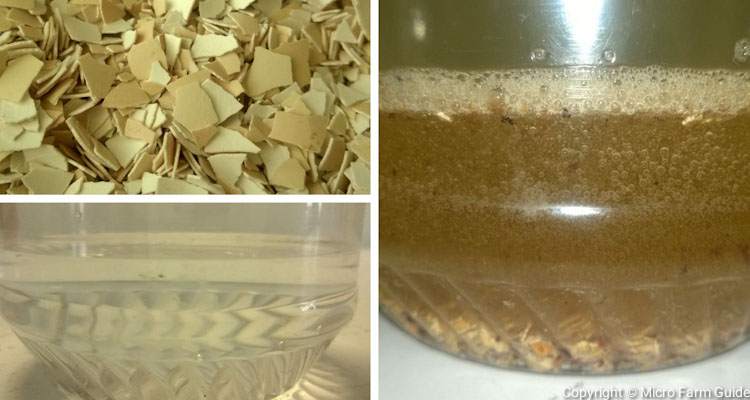
In this article, I’m about to explain how to make water-soluble calcium from start to finish.
I’ve also included some pointers on how and when to use it to get the best results.
Before We Get Started…
You will need a few items to make the best use of this guide.
Chances are you already have most of these in your kitchen or tool shed.
Here is a list of the tools and materials needed to make WS-Ca.
| Items | Details |
| Eggshells or Seashells | ¼ Cup or 50 ml |
| Brown Rice or White Vinegar | 2 ½ Cups or 500 ml |
| Crushing Tools | Cloth And Hammer |
| Thick Bottom Pot | Small |
| Plastic or Glass Jar | 2 Liter |
| Porous Paper (Tissue) | To Cover Mouth Of Jar |
| Rubber Band or String | To Fasten Paper To Bottle |
| Measuring Cup | Metric-Standard Units |
Note: You will also need a spray can or watering can to apply the solution.
Ready to go? Let’s Get Started
5 Steps To Make Water Soluble Calcium
Follow this simple process to extract water-soluble calcium from eggshells.
- Collect And Clean Eggshells
- Crush Shells Into Smaller Pieces
- Roast Eggshells
- Add Vinegar To The Eggshells
- Filter And Store WS-Ca Solution
1. Collect And Clean Eggshells
From this day onwards, do not throw away your eggshells. Instead, after cracking them, you can clean and put them aside to dry.
- Remove the inner lining from the shell. It is easier to do this under running water.
Once cleaned, I usually place the shells in a container and allow them to dry in the sunlight.
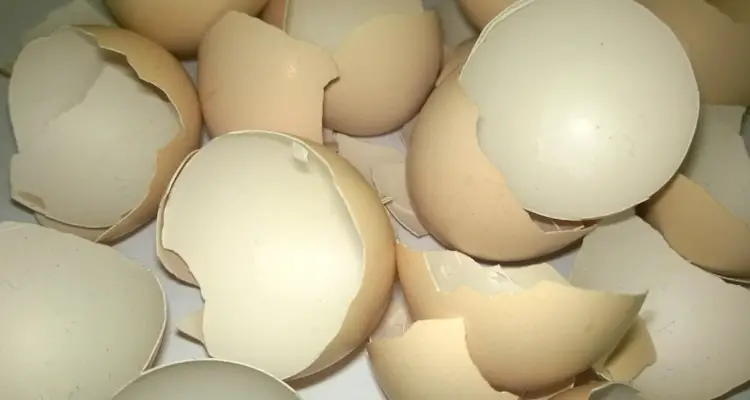
2. Crush Shells Into Smaller Pieces
Eggshells are very brittle and become even more so if you dry them under sunlight.
- For seashells and large quantities, place the shells in a piece of cloth and pound it with a hammer or other blunt object.
I usually use less than two dozen eggshells at a time. I crush them with my hands. If you choose to do this, just be careful; they are sharp!
While you want smaller pieces, do not ground the shells to a powder.
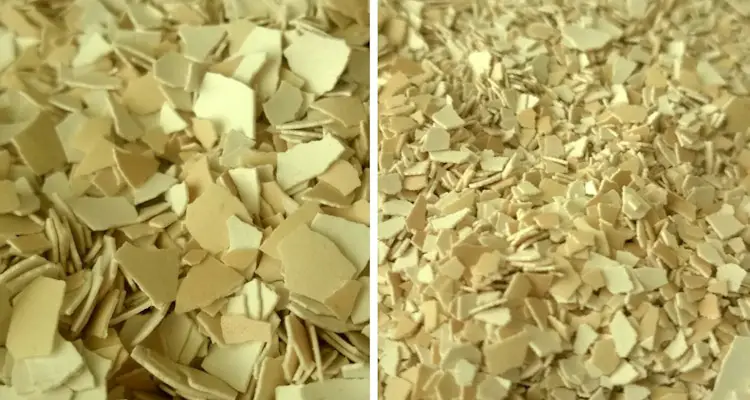
3. Roast Eggshells
You need to get rid of organic particles that may contaminate your solution.
- Place a pot or pan made of thick material onto a fire.
- Add crushed eggshells into a pot and allow to heat, stirring occasionally.
The shell will smell like they are burning.
- Keep turning until they turn dark brown. Some may even become black.
- Remove roasted shells from the fire and allow them to cool.
You can spread it into a plate for faster cooling.
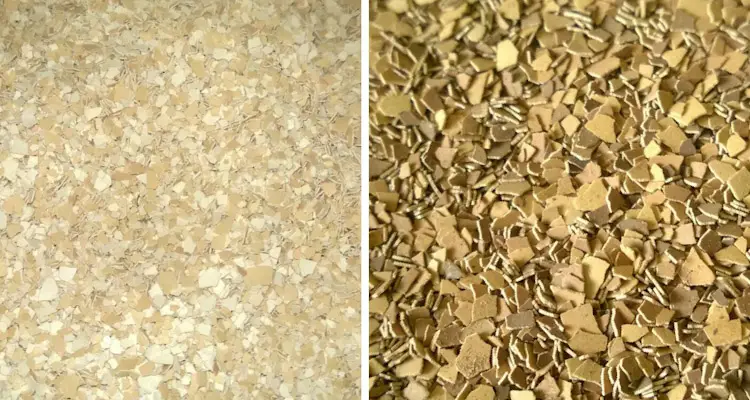
4. Add Vinegar To The Eggshells
Add vinegar to eggshells in a ratio of 10 parts to 1.
- Measure and pour 500 ml of Vinegar into the 2 liters jar.
- Measure 50 ml of eggshells and gradually add to the vinegar.
The CaCO3 in the eggshells react vigorously with the acidic vinegar and start to foam.
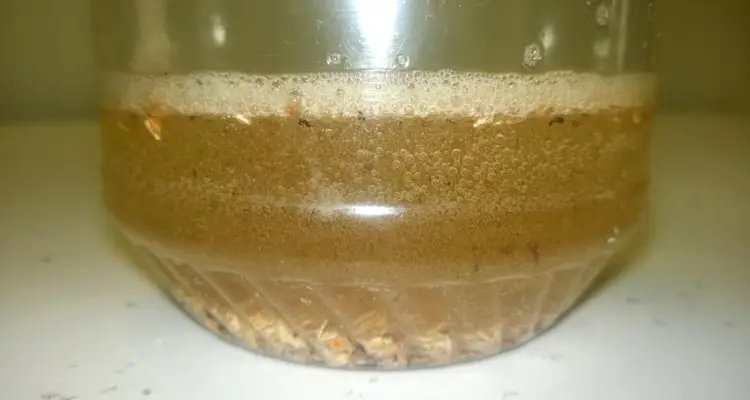
Caution: The reaction produces a foul odor, so ensure you do it in a well-ventilated area.
- DO NOT add all the eggshells at once unless you have a large jar. If you do, the solution will overflow.
- Cover the jar with the porous paper secured in place with the rubber band.
- Leave it in a cool, dry, well-ventilated area until the reaction stops. This process can take about 3 to 10 days.
I usually leave it for ten days. In theory, this time frame allows for maximum extraction.
See Also: How To Make Brown Rice Vinegar In KNF (Step By Step)
5. Filter And Store WS-Ca Solution
After the extraction period, you may notice some particles in the solution.
- Filter or carefully pour the solution into a bottle, label, then close it.
- Store it in a cool, dry place. You can use a cupboard.
WS-Ca is shelf-stable. It stores well at room temperature for quite a while, without much of a hassle.
In doing so, you can always have a calcium plant supplement at hand for when your plants need it.
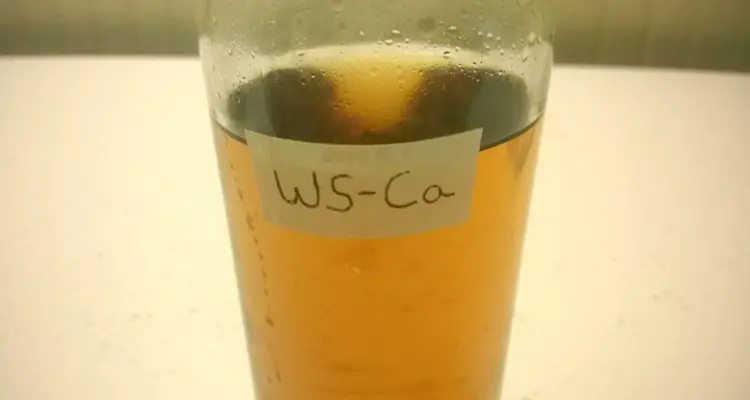
When Should You Use WS-Ca?
In Korean Natural Farming, the Nutritive Cycle guides the use of Water-Soluble Calcium, ensuring healthy plant growth and fruit production.
According to the Nutritive Cycle Theory, you should use Water Soluble Calcium during the plant’s Change Over phase. At this point, the plant is shifting focus from vegetative growth to fruit production.
You should apply WS-Ca when plants begin to flow and several times as the fruit is developing. By doing this, you ensure solid fruit production.
However, you can also use it to treat growth-related issues.
You can use WS-Ca when leaves lack brilliance or burns at the tips, flowers drop, fruits rot or do not ripen, and when there are plants that seem to be overgrowing possible due to too much nitrogen in the soil.
Keeping this in mind, avoid using Water Soluble Calcium if you want to encourage rapid vegetative growth
How To USE Water Soluble Calcium (WS-Ca)
Water Soluble Calcium provides bioavailable calcium to plants.
Calcium is already abundant in nature. However, the roots are not always able to absorb it.
As a result, WS-Ca works through the leaves of plants; foliar application.
To apply WS-Ca, you first need to dilute the solution with water. The recommended mix ratio is 1:1000.
For example:
- 1 ml of WS-Ca to 1 Liter of water
- 1 tsp of WS-Ca to 1 ½ gal of water
Ideally, you will use a spray can to apply this, but you can also use a watering can or overhead sprinkler system for larger areas.
Benefits Of Water Soluble Calcium
Plants show signs of calcium deficiency such as blossom end rot, leaf tip burn, stunted or abnormal growth if they cannot access calcium from the soil.
The most significant benefit of Water-Soluble Calcium is its ability to absorb into the leaves of the plant.
This process allows plants to get the required amount of calcium to function properly.
Calcium helps plants absorb phosphoric acid and other nutrients, making them more nutrient-dense and preventing overgrowth.
Calcium helps make fruits firmer, tastier and allows them to store much longer.
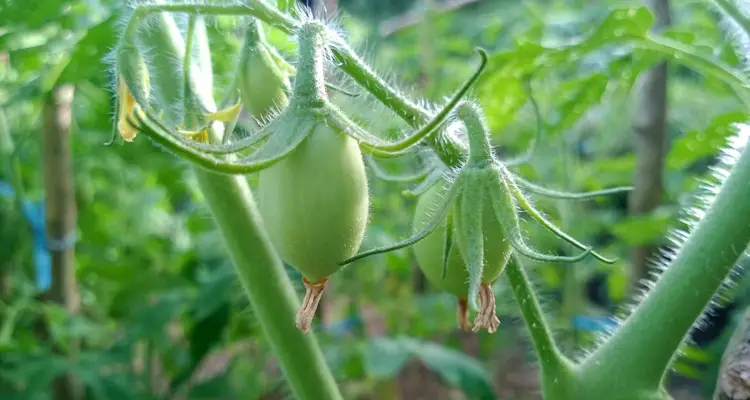
Final Thoughts
Calcium is an essential nutrient, which is abundant in nature but not always in a form that plants can use
Water Soluble Calcium provides a bioavailable source of calcium that can enhance the overall performance of a plant.
With WS-Ca, plants receive all the benefits of calcium even if growing in less than ideal conditions.
Most importantly, water-soluble calcium can mix with other natural farming inputs, such as Fermented Plant Juice and Oriental Herb Nutrients, to give plants an extra boost to help produce tasty, aromatic fruits with longer shelf lives.
Related Questions
What Is A Bioavailable Mineral?
A bioavailable nutrient can be digested, absorbed or metabolized, through normal processes within an organism. It refers to a form of the mineral that readily breaks down into simple parts to be used by the body.
References
Reddy, R. (2011). Cho’s Natural Farming. SARRA. (PDF)
